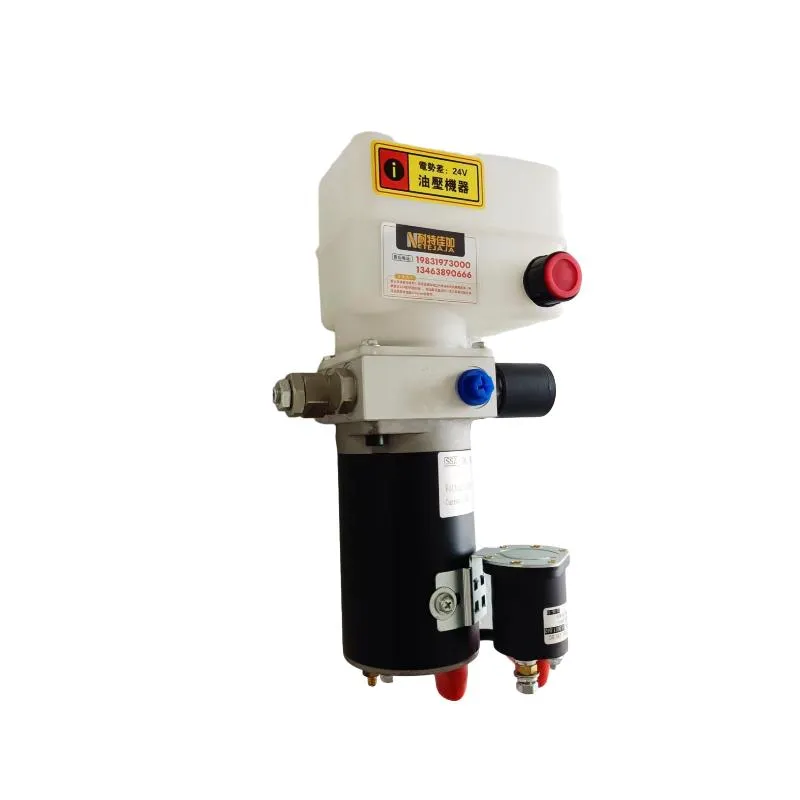Nov . 30, 2024 04:05 Back to list
cross section of hydraulic cylinder product
Cross Section of Hydraulic Cylinder A Comprehensive Overview
Hydraulic cylinders are essential components in various industrial applications, providing the necessary force and motion for machinery and equipment. A crucial aspect of understanding hydraulic cylinders is examining their cross section, which reveals significant insights into their design, functionality, and performance.
Understanding Hydraulic Cylinders
Before delving into the cross-section of hydraulic cylinders, it's important to understand what they are and how they work. A hydraulic cylinder is a mechanical actuator that generates linear force through the use of hydraulic fluid. They are widely used in construction, manufacturing, and automotive industries, among others, to perform tasks such as lifting, pushing, and pulling.
The Anatomy of a Hydraulic Cylinder
A hydraulic cylinder typically consists of several key components, each of which plays a vital role in its operation
1. Cylinder Barrel The cylinder barrel is the main body of the hydraulic cylinder, where the hydraulic fluid is contained. It is usually made of high-strength steel to withstand internal pressure and external forces.
2. Piston The piston is a cylindrical component that moves within the barrel. When hydraulic fluid is introduced into the cylinder, it creates pressure that pushes the piston, resulting in linear motion. The piston has seals that prevent fluid leakage and maintain pressure within the chamber.
3. Rod The rod extends from one end of the cylinder and is connected to the load or machinery that needs to be moved. The movement of the rod is directly proportional to the movement of the piston inside the cylinder.
4. End Caps Each end of the cylinder is capped with end caps. These caps serve to seal the cylinder and contain the hydraulic fluid. They are threaded or welded to the cylinder barrel, ensuring a tight fit and preventing leaks.
cross section of hydraulic cylinder product

5. Seals and Gaskets Various seals and gaskets are used to prevent hydraulic fluid from leaking out of the cylinder. These components are critical for maintaining the cylinder's efficiency and ensuring that it operates at optimal performance levels.
Cross Sectional Analysis
Examining a hydraulic cylinder's cross section provides a deeper understanding of its internal workings. The cross-section reveals the arrangement of the piston, rod, seals, and fluid pathways. It is essential for engineers and designers to analyze this cross-sectional view when developing hydraulic systems.
1. Fluid Flow The cross section illustrates how the hydraulic fluid enters and exits the cylinder. Typically, one side of the piston is filled with fluid while the other side is relieved of pressure, creating a force that drives the piston. Understanding this fluid flow is crucial for optimizing cylinder performance and efficiency.
2. Sealing Technology The cross-sectional view helps in assessing the sealing technology used in the cylinder. Different types of seals (such as O-rings, lip seals, or piston seals) can be identified, each offering varying levels of effectiveness against fluid leakage. Proper sealing is essential for the longevity of the hydraulic cylinder and for maintaining high operational efficiency.
3. Material Strength By analyzing the cross section, engineers can evaluate the thickness and material of the cylinder walls and piston. Ensuring that these components are structurally sound is vital for withstanding high pressure and preventing failures during operation. The material choice affects the weight, durability, and heat resistance of the cylinder.
4. Pressure Distribution The distribution of pressure across the piston and cylinder walls can also be visualized in the cross-section diagram. A uniform distribution of pressure is essential for efficient operation and to avoid undue stress on specific areas of the cylinder, which could lead to deformation or failure.
5. Design Considerations The cross section provides insight into design considerations, such as the size of the cylinder relative to its intended application. For heavy-duty applications, larger cylinders with thicker walls may be necessary, while lighter tasks may require smaller, more compact designs.
Conclusion
The cross section of a hydraulic cylinder is a vital area of study for engineers and technicians involved in fluid power systems. It provides a wealth of information regarding the internal workings, sealing mechanisms, and material properties critical for performance and durability. Understanding these elements enables the design and maintenance of more efficient hydraulic systems, ultimately enhancing productivity across various industries. As hydraulic technology continues to evolve, the analysis of hydraulic cylinder cross sections will remain an integral part of optimizing design and function in engineering applications.
-
Pallet Truck Power Units: Smart Logistics Solutions
NewsAug.01,2025
-
1.5 Ton Lifting Cylinder - Hebei Shenghan | Heavy-Duty Hydraulic Solutions
NewsAug.01,2025
-
1.5 Ton Lifting Cylinder 70/82-40-290-535 - Hebei Shenghan | Heavy-Duty Lifting, Precision Engineering
NewsAug.01,2025
-
1.5 Ton Lifting Cylinder 70/82-40-290-535-Hebei Shenghan|Hydraulic Lifting Solutions
NewsAug.01,2025
-
Double Acting Power Unit with GPT-4 Turbo | AI Hydraulics
NewsJul.31,2025
-
1.5 Ton Lifting Cylinder-Hebei Shenghan Hydraulic|Heavy-Duty Lifting,Custom Hydraulic Solutions
NewsJul.30,2025
